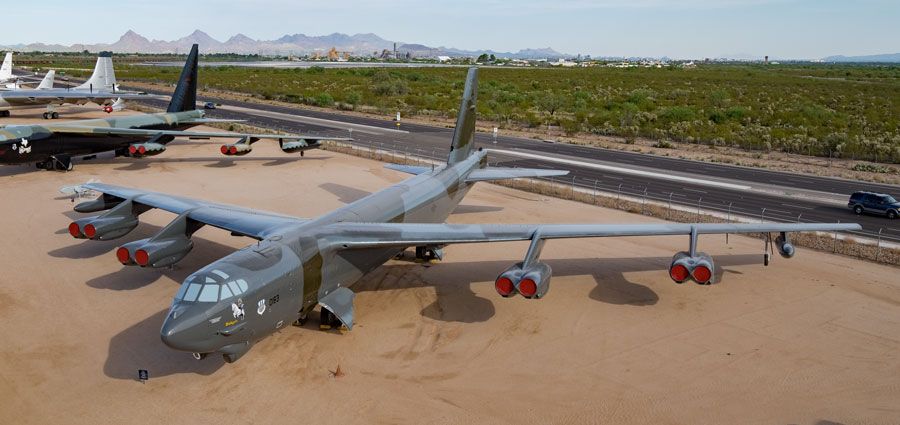Boeing B-52G Stratofortress
Design work for what would become the B-52 Stratofortress began in 1945. After several major design changes, the first of the eight-engined bombers took to the air on October 2, 1952. The first of the eight major production variants of the B-52 were built in 1954 with production continuing through 1963.
The B-52G variant of the Stratofortress was introduced in 1958. It was the first of the “short tail” versions of the aircraft with the tail a total of 8 feet shorter than the earlier versions. Other modifications significantly reduced the weight of the aircraft and moved the rear gunner from the tail of the plane to the main crew compartment where he operated his guns by remote control. The “G” model participated in the B-52s second war in 1991 with 74 aircraft dropping a total of 36,590 bombs with a total weight of 11,742,000 pounds, or 5,781 tons, and participating in what were at the time the longest combat missions ever flown.
Wingspan | 185 ft |
Length | 160 ft 10 in. |
Height | 40 ft 7 in. |
Weight | 488,000 lbs (loaded) |
Maximum Speed | 634 MPH |
Service Ceiling | 46,000 ft |
Range | 7,100 miles |
Engines | Eight Pratt & Whitney J57-P-43WB turbojets with 13,759 pounds of thrust each |
Crew | 6 |
Manufacturer
Boeing
Markings
2nd Bombardment Wing, 596th Bomb Squadron, Barksdale AFB, Louisiana, January 1991
Serial Number
58-0183
Designation
B-52G “Valkyrie”
